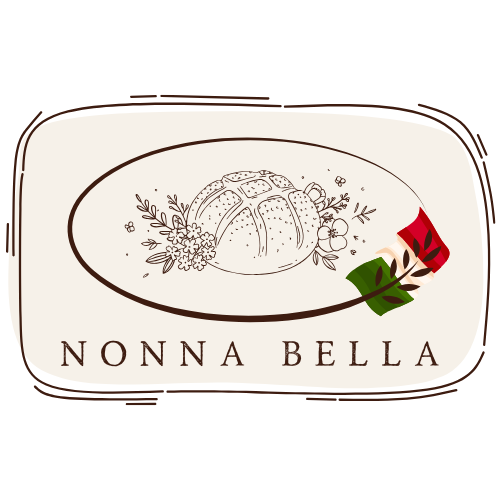
The Ultimate Guide to Sourdough Baking Tips for Perfection
Welcome to the world of sourdough, a place where ancient traditions meet modern artisan techniques to create something beautifully timeless. Whether you're a seasoned baker or just starting your journey into the art of sourdough, this guide aims to provide you with crucial tips for baking the perfect homemade sourdough bread. We'll delve into topics like sourdough starter maintenance, sourdough fermentation processes, and the benefits of wild yeast fermentation, among others. Let's embark on this delicious adventure together.
Understanding Sourdough: A Bread with Character
Sourdough bread is unlike any other bread, bringing together tangy flavors, rich textures, and a satisfying crust that regular bread often can't match. The unique quality of sourdough lies in its fermentation process. The use of wild yeast and lactobacilli bacteria found in a sourdough starter gives the bread its distinctive taste and texture.
Sourdough Starter vs. Commercial Yeast
A sourdough starter is an organic combination of flour and water left to ferment, utilizing wild yeast from the environment. This method dates back thousands of years and differs significantly from employing commercial yeast, which is cultivated in controlled settings. The result is bread with complex flavors, improved digestibility, and even potential benefits for individuals with insulin sensitivities—making sourdough an intriguing option for diabetics.
The Building Block: Your Sourdough Starter
To bake perfect bread, you first need a robust sourdough starter. Let's break down the steps for creating, maintaining, and troubleshooting your starter.
How to Feed Sourdough Starter
A healthy sourdough starter requires consistent feeding. The basic feeding regimen involves a combination of flour and water. Typically, equal parts of water and flour are added to the starter, doubling its volume. It's crucial to maintain a regular sourdough starter feeding schedule.
Troubleshooting Sourdough Starter Issues
If your starter is sluggish or developing unwanted odors, it's time to reconsider your feeding ratios, water quality, or the type of flour being used. Ensure optimal room temperatures to aid fermentation and discard a portion of the starter if it's becoming too large, using sourdough discard recipes to minimize waste.
Storage of Sourdough Starter
For long-term storage, consider refrigeration. If refrigerated, remember to allow your starter time to warm and become active before use. Learn the nuances of how to store sourdough starter to maintain its vitality.
For a ready-to-use culture with a rich legacy, consider trying the Nonna Bella Dehydrated Sourdough Starter, a Tuscan culture with roots dating back to the 1800s.
The Baking Process: From Dough to Delicious
With your starter in peak condition, it's time to bake.
How to Bake Sourdough Bread
- Mixing and Kneading: Incorporate your starter with flour, water, and possibly a bit of salt, using tools like the Danish Dough Whisk for efficient mixing.
- First Rise and Fermentation: Let your dough rest and rise. This sourdough fermentation stage can be optimized using conditions slightly warmer than room temperature. Employ an Oval/Round Bread Rattan Fermentation Basket for excellent shape retention.
- Shaping Techniques: Properly shaping your dough is vital for a good rise and structure. This stage is where your personal touch and skill shine.
- Final Rise: Allow the dough another period to rise post-shaping.
- Scoring: Scoring the dough with artistic patterns facilitates controlled expansion as it bakes. Discover the best sourdough scoring techniques to give your loaf a unique look.
- Baking: Preheat your oven with a high-quality vessel like the Martha Stewart 7Qt Enameled Cast Iron Dutch Oven. Baking in a Dutch oven helps create the perfect crispy sourdough crust by trapping steam.
Troubleshooting in Sourdough Baking
Pay attention to the dough's hydration levels or issues like over-proofing. Use a Silicone Baking Mat Kneading Pad to ensure a non-stick surface and simplify dough handling.
Beyond Bread: Exploring Varieties and Recipes
Step beyond the classic loaf into other fascinating uses for your starter.
Sourdough Pizza Dough
Sourdough's flavor translates beautifully into pizza dough. The slow fermentation imparts a complex flavor that pairs perfectly with simple, quality toppings, turning your pizza night into a gourmet experience.
Sourdough Bagels
Crafting homemade sourdough bagels is rewarding and can produce a deliciously chewy texture unique to homemade sourdough.
Why Choose Sourdough? Benefits to Consider
The organic sourdough starter culture provides not just flavor but nutritional value. Compared to regular bread, sourdough's fermentation reduces antinutrients and enhances the breakdown of gluten, aiding digestion.
Is a Long-Legacy Sourdough Starter Better?
The depth of character in bread made from a long-legacy starter, such as those passed down from generations, has unique and irreplicable flavor profiles. While a young starter will produce excellent results, tapping into a heritage starter can elevate your breadmaking experience.
Conclusion
Baking sourdough bread is both a science and an art. With practice and a bit of experimentation, the operational mysteries of your sourdough life will become clearer. Visit Italian Sourdough for more information and tools to perfect your sourdough baking endeavors. Embrace the process, and let your kitchen become a bakery of wonder with each batch you create.
